This Designer Turned Old Denim into a Canadian Tuxedo
How Patrick Salonga transformed six pairs of jeans into a tasteful classic.
Do you ever think about the past lives of thrift-store clothes? Toronto-based sustainable designer Patrick Salonga does. In fact, he’s slightly obsessed with them. “Denim is my favourite material to work with because it lasts forever and has so many stories attached to it,” he says over a video call. “In my mind, I’m like, ‘These jeans were owned by a mom’ or ‘A thug wore this jacket,’ and I love when you can tear pieces apart and combine them.”
Reality TV is responsible for sparking Salonga’s upcycling journey. A few years after launching his eponymous label in 2014, he found himself on the verge of bankruptcy. “My aesthetic at the time was very post-apocalyptic and dark and I felt no one here really got it, so I almost quit the industry,” reflects Salonga, who was born in the Philippines. In 2018, in an effort to promote his brand, he made an appearance on an episode of Canadian fashion competition TV show Stitched, where the contestants were tasked with creating a garment out of old clothing. After winning the challenge, he thought, “Why am I not doing this at home?”
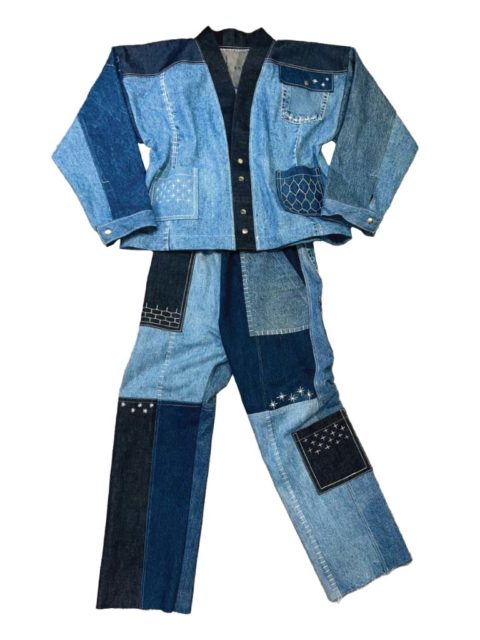
Fast-forward to 2022 and the designer has become known for upcycling thrifted denim and his East-meets-West aesthetic. “When you think of jeans, you think of the Canadian tuxedo or classic Americana style, so I always try to put an Eastern twist on them,” he shares. This ethos often translates into kimono-inspired jackets, monochromatic colour blocking and streetwear silhouettes. “I like to say I don’t create anything new but rather something that feels familiar,” he adds. “I believe in the power of nostalgia.”
Here, Salonga pulls back the curtain on his process and how he transformed six pairs of jeans into a trendy tux.
Eastern exposure

“The inspiration for this outfit goes back to my East-meets-West ideology. I like the idea of mixing a classic tuxedo with Japanese workwear, so I looked at vintage Levi’s styles and my own closet for reference before sketching the design.”
Pattern play
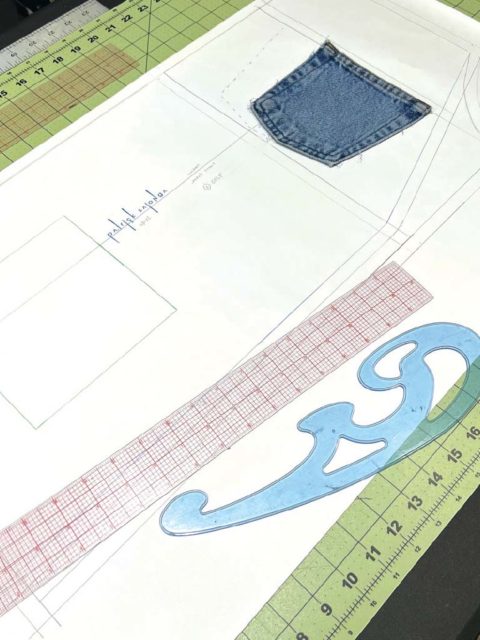
“Then comes my favourite part, which is pattern drafting. Patchwork can get lost in translation if it’s not curated, so the full suit consists of 25 to 30 pattern pieces. I also wanted to make sure the jacket and pants look linear and cohesive.”
Breaking free
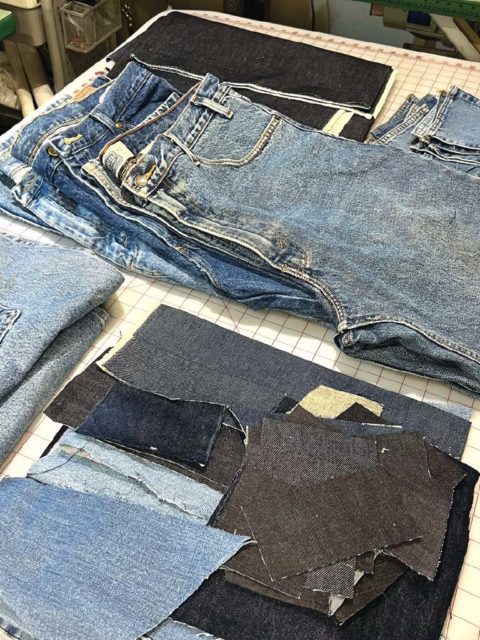
“Next, I deconstructed about six pairs of thrifted jeans and scraps and chose which denim pieces would go where. This step took the most time because I tried to ensure that none of the same colours touched so the blue tones would have a nice contrast.”
Steady hand
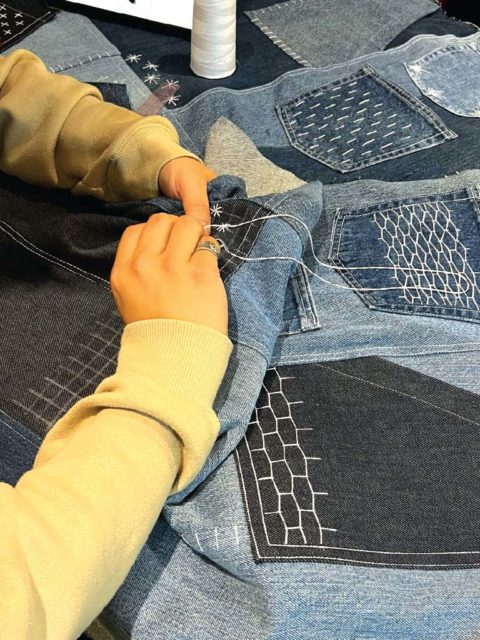
“I did all the embroideries by hand while I was sewing the garment. I used a traditional Japanese technique called ‘sashiko’ to make the needlework look like a fishing net in honour of Japanese fishermen. It looks pretty simple, but I had to redo it three times to get it perfect.”
Oh snap
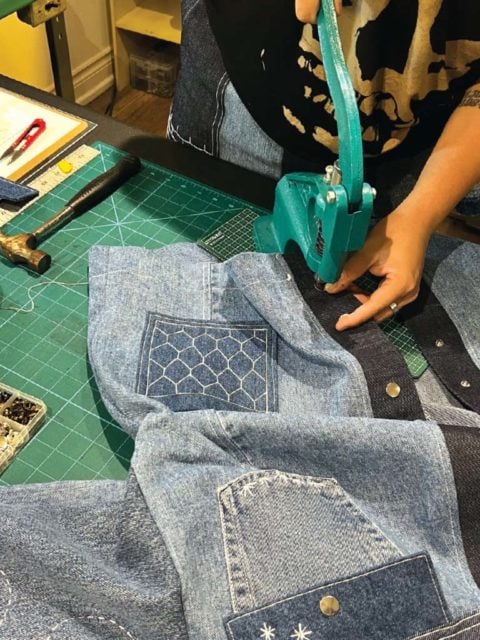
“After everything was constructed, I moved on to the finishing details. I added snaps for functionality and to lean into the Western aesthetic of the outfit. I then checked the fit of the jacket and pants, and thankfully it all looked good
Endnotes
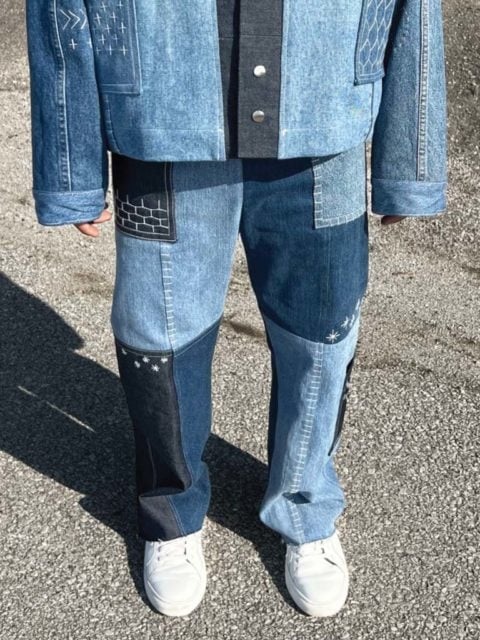
“The final product really encapsulates the brand. I think it shows the quality of our work, our East-meets-West mentality and the power of storytelling in thrifted denim. And since it’s made from jeans, it will eventually mould to your body. I’m very proud of it.”
This article first appeared in FASHION‘s September issue. Find out more here.






